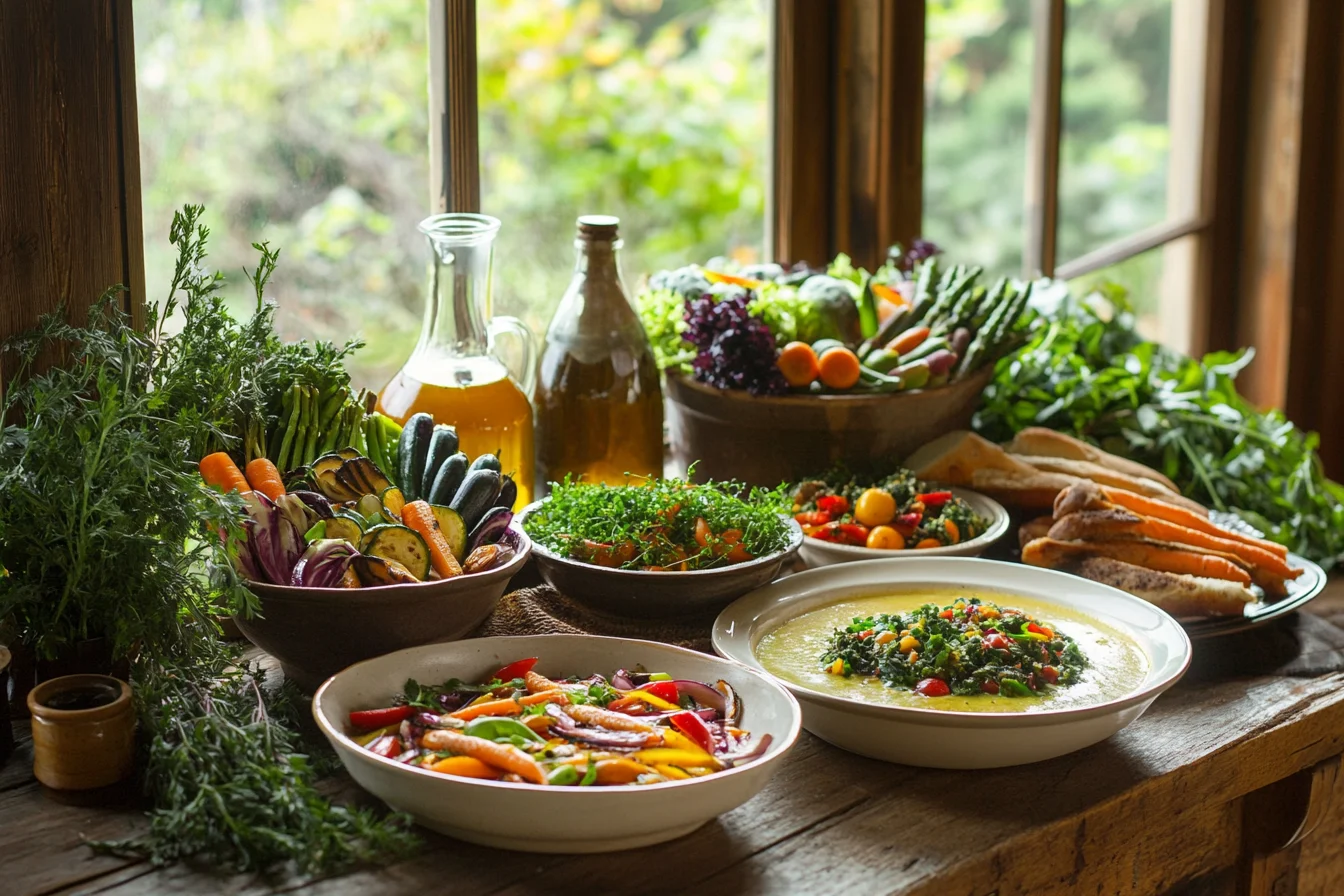Vegetable recipes: Easy, healthy, and delicious ideas from around the World
Introduction
Vegetables are the unsung heroes of the kitchen – versatile, flavorful, and packed with nutrients. Whether you’re looking for easy vegetable recipes to whip up on a weeknight or creative ways to make a hearty meatless meal, cooking with veggies can be fun and satisfying. From quick stir-fries to comforting oven-baked casseroles, there’s a vegetable dish for every craving. Health experts even recommend eating around 2–3 cups of vegetables per day as part of a balanced diet, and with the right recipes, getting those veggies in can be truly delicious. In this article, we’ll explore a variety of veggie-centric recipes – spanning multiple global cuisines – that are simple to prepare and sure to please even picky eaters. So, whether you’re in the USA or Canada, get ready to boost your mealtime with these tasty vegetable recipes!
Easy Vegetable Recipes for Busy Weeknights
When you need dinner on the table fast, vegetables are your best friend. They cook quickly and pair well with just about anything. These easy vegetable recipes are perfect for busy weeknights or anytime you want a wholesome meal without a lot of fuss. The key is to use simple techniques like roasting or stir-frying that bring out the best in each veggie. (Tip: Cutting your vegetables into similar-sized pieces helps them cook evenly and faster.) Here are a few go-to easy recipes:
Speedy Stir-Fried Vegetables: Stir-frying is a lifesaver on hectic nights. Toss whatever veggies you have (broccoli florets, bell peppers, sliced carrots, snap peas – you name it) into a hot oiled pan with a bit of garlic and ginger. In just a few minutes of high-heat cooking, you’ll have crisp-tender veggies bursting with flavor. Add a splash of soy sauce or teriyaki at the end for a quick Asian-inspired sauce. Serve over rice or noodles for a complete meal. (This quick veggie stir-fry is a great way to clean out the fridge and get a healthy veggie dinner on the table fast.)
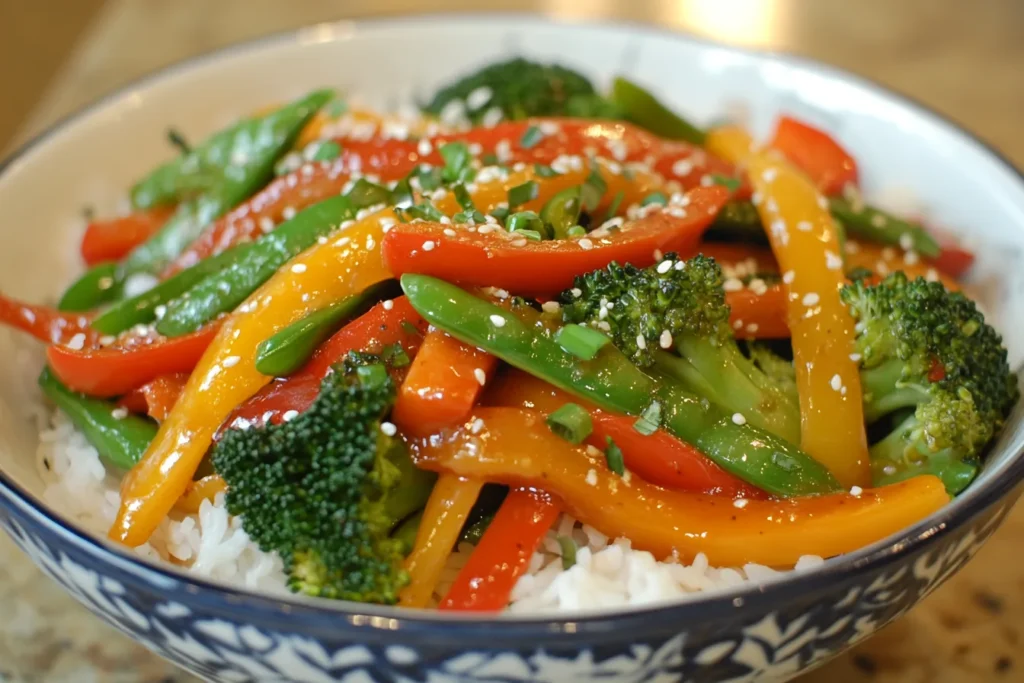
Sheet-Pan Roasted Vegetables: Roasting is one of the easiest hands-off ways to cook vegetables, and the oven does all the work. Simply chop up a mix of vegetables – for example, carrots, potatoes, broccoli, cauliflower, and Brussels sprouts – toss them with a little olive oil, salt, and pepper, and spread them on a baking sheet. Roast at about 400°F (200°C) until they’re golden and tender (usually 20-30 minutes, depending on the veggie). Roasting vegetables is a “simple yet transformative way to bring out their natural sweetness and depth of flavor”. The high heat caramelizes the natural sugars, making veggies like carrots and sweet potatoes extra sweet, and broccoli and Brussels sprouts nice and crispy on the edges. You can enjoy roasted veggies as a side dish or toss them into grain bowls, pasta, or salads. (Pro tip: Easy roasted vegetables can be made in big batches – use leftovers in wraps or omelets the next day!)
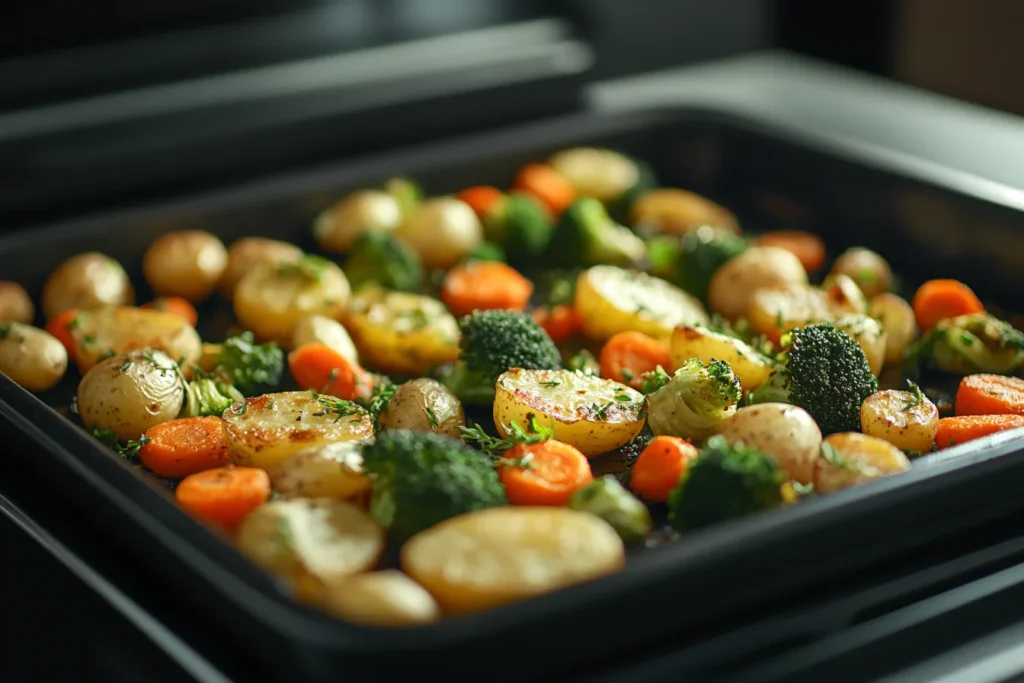
One-Pot Vegetable Soup: For a fuss-free meal, try a quick veggie soup. Sauté some chopped onions, celery, and carrots in a pot, then add broth and whatever vegetables you have on hand (diced zucchini, green beans, peas, tomatoes, etc.). Throw in a handful of pasta or rice and simmer until everything is tender. In under 30 minutes, you’ll have a comforting vegetable soup. It’s a perfect easy recipe to warm up a chilly evening and an excellent way to use up odds and ends from the produce drawer. Serve with crusty bread for a cozy, healthy veggie dinner.
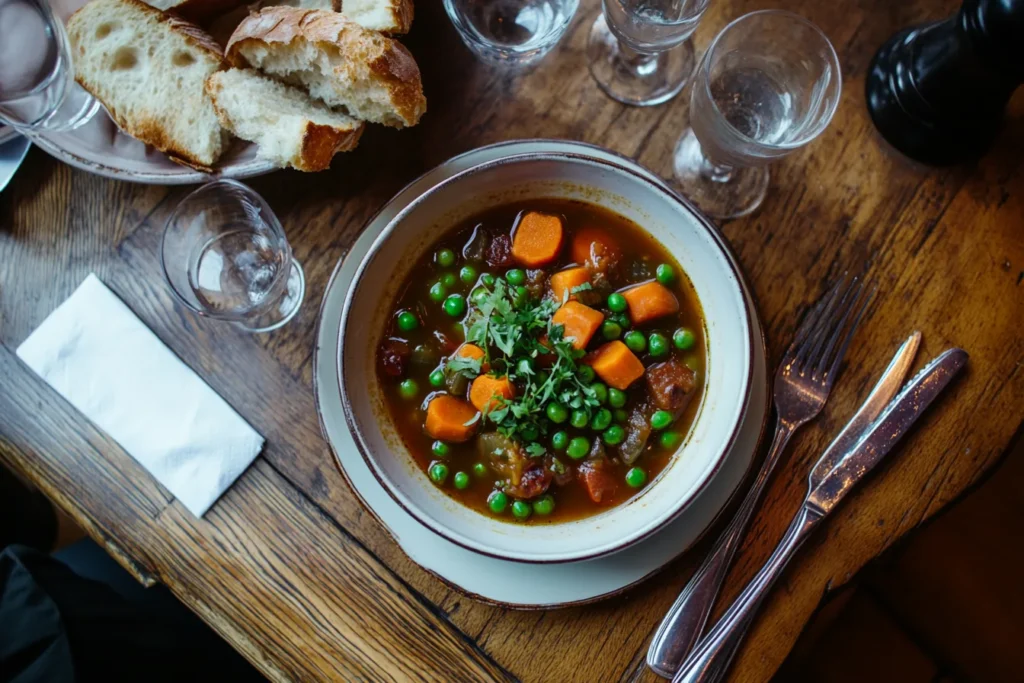
Veggie-Packed Quesadillas: This is a fun, quick option that’s super adaptable. Take a whole-wheat tortilla and fill it with a mixture of sautéed vegetables (for example, spinach, mushrooms, and onions work great) and a sprinkle of cheese. Fold it and toast in a pan until the tortilla is golden and the cheese is melted. Cut into wedges and serve with salsa or Greek yogurt. These veggie quesadillas make a great light dinner or lunch, and you can customize them with any vegetables you have. Kids often love them, and it’s a clever way to sneak more veggies into a meal without any complaints.
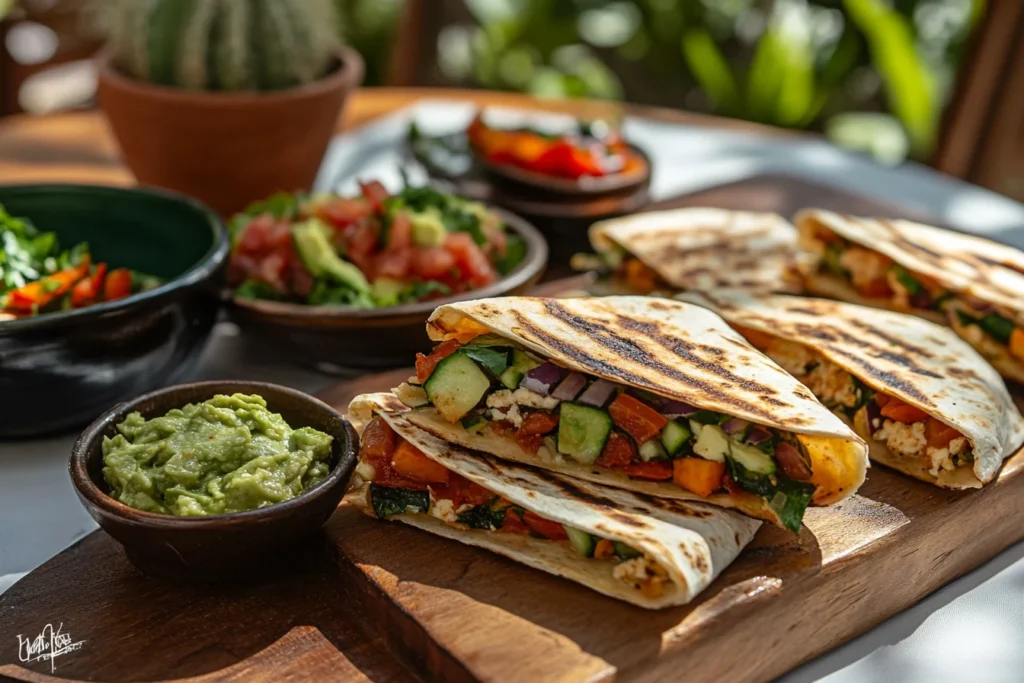
Each of these recipes is straightforward and quick to prepare. They prove that cooking vegetables doesn’t have to be time-consuming – with simple methods like stir-frying, roasting, boiling (for soups), or light sautéing, you can create flavorful dishes in a flash. Plus, these options are quite family-friendly vegetable recipes; even picky eaters might be tempted by the sweet roasted carrots or cheesy veggie quesadillas. Next, let’s move on to some ideas for heartier meals where veggies take center stage.
Healthy Veggie Dinners Everyone Will Love
Looking for healthy veggie dinners that are satisfying and full of flavor? Vegetables can absolutely shine as the main course. The trick is to use hearty ingredients (think potatoes, beans, or whole grains) and bold seasonings so you won’t even miss the meat. These dinner ideas are great for vegetarians or anyone trying to incorporate more plant-based meals into their routine (hello, Meatless Monday!). And even if you aren’t vegetarian, you can enjoy these alongside your favorite protein or as filling side dishes. Here are some delicious and healthy vegetable-based dinner ideas:
Ratatouille is a French vegetable medley that makes for a comforting, healthy dinner. It’s loaded with tomatoes, zucchini, eggplant, and herbs – a perfect example of a veggie-centric meal that’s both rustic and satisfying.
Hearty Vegetable Stir-Fry with Tofu: Building on the stir-fry idea, you can make it a more substantial dinner by adding tofu or another plant protein like tempeh or edamame (soy beans). Use a mix of colorful veggies such as bell peppers, broccoli, mushrooms, and snow peas. Stir-fry everything in a bit of sesame oil and garlic, add tofu (cut into cubes) and a flavorful sauce (soy sauce, a dash of maple syrup or honey, and a bit of sriracha for heat). Serve over brown rice or quinoa. This dish is high in protein, fiber, and vitamins – truly a healthy vegetable recipe that doesn’t skimp on flavor. The variety of textures (crisp-tender veggies and golden pan-seared tofu) makes it as satisfying as any takeout, but much healthier.
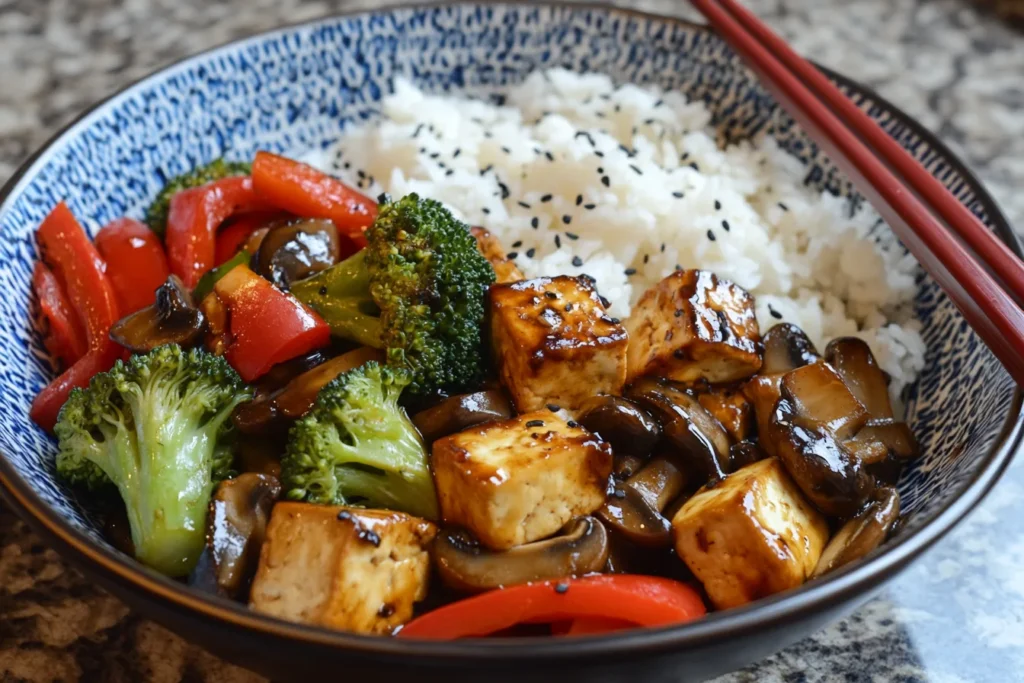
Vegetarian Curry (Loaded with Veggies): Curries are a fantastic way to turn assorted vegetables into a hearty one-pot dinner. For example, a mixed vegetable curry could include cauliflower, potatoes, peas, and carrots simmered in a spiced tomato sauce with garlic, ginger, and curry powder (or use a store-bought curry paste for convenience). Add coconut milk for a creamy touch (common in Thai curries) or keep it tomato-based for an Indian-style curry. One popular Indian dish, aloo gobi, is a curry made with potatoes and cauliflower plus flavorful spices like turmeric and cumin. Serve your veggie curry with rice or warm naan bread. It’s filling, warming, and packed with nutrients. Plus, the spices not only add flavor but can have health benefits (for instance, turmeric is known for its anti-inflammatory properties).
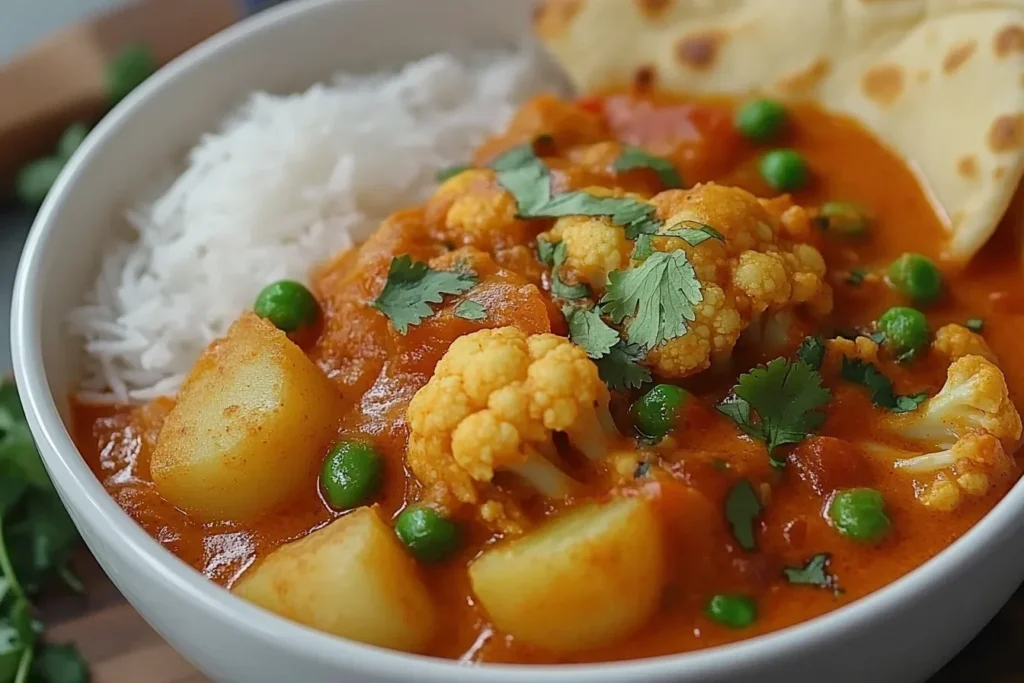
Ratatouille (Provençal Vegetable Stew): Hailing from France, ratatouille is a classic example of a vegetable-packed dinner. It’s basically a stew of eggplant, zucchini, bell peppers, tomatoes, onions, and plenty of herbs like thyme and rosemary. Everything is simmered together with olive oil and garlic until tender. The result is a melt-in-your-mouth medley of flavors. Ratatouille is traditionally a side dish, but it can easily be a main course – especially served with crusty bread or over a bowl of rice. It’s low in calories and high in fiber, vitamins, and antioxidants from all those veggies. (Fun fact: the movie Ratatouille actually popularized this dish worldwide!) You can make it ahead of time; it tastes even better the next day as the flavors deepen. A bowl of ratatouille is comfort food that loves you back (it’s all veggies, after all).
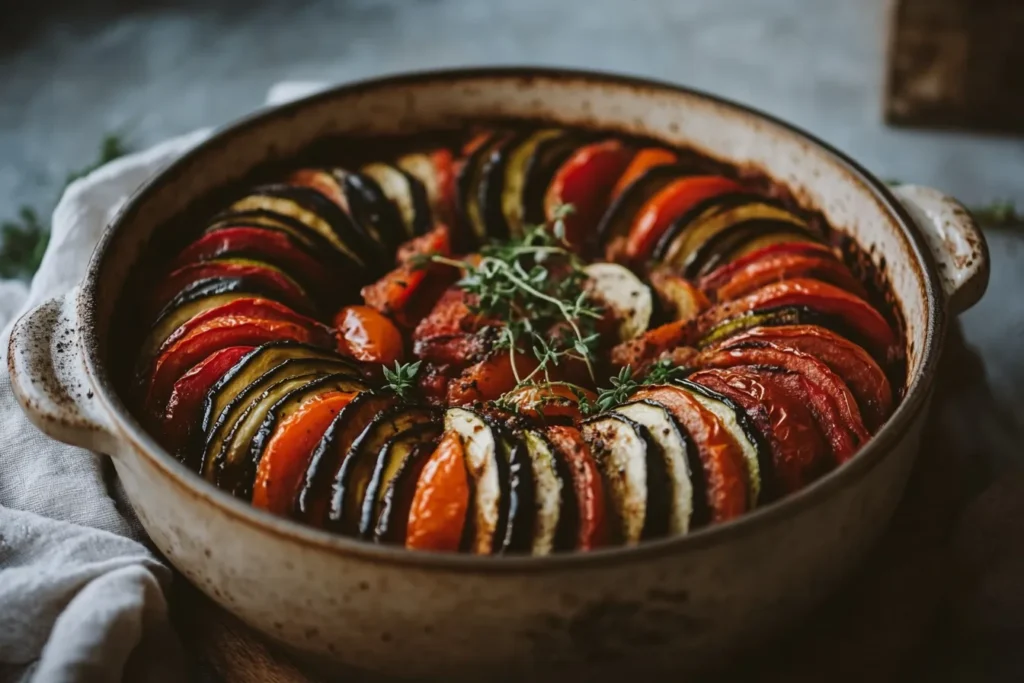
Veggie “Power Bowls” (Grain Bowls): Power bowls or Buddha bowls have become really popular, and for good reason. They’re basically a mix-and-match concept where you combine a whole grain (like brown rice, quinoa, or farro) with a variety of roasted or fresh vegetables, plus some protein (beans, chickpeas, or tofu) and a tasty sauce. For a balanced bowl, aim for lots of colors: roasted sweet potatoes or squash for something orange, steamed kale or roasted Brussels sprouts for green, beets or red peppers for a pop of red, etc. Top it off with chickpeas for protein and maybe a drizzle of tahini dressing or a lemon-garlic vinaigrette. These bowls are extremely nutritious and can be prepped ahead. For example, roast a batch of veggies and cook a pot of quinoa on Sunday, and you’ve got the components for quick assembly of healthy veggie dinners through the week. It’s an easy way to eat a variety of vegetables and keep meals interesting.
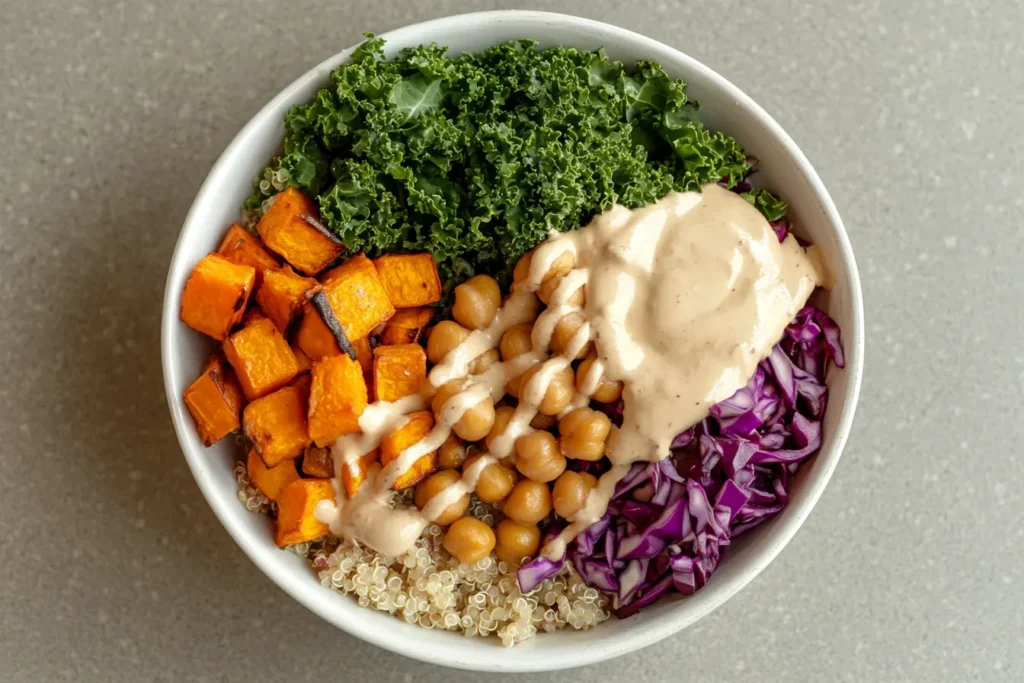
Vegetarian Chili or Stew: If you crave something warm and filling on a cold night, try a vegetarian chili loaded with vegetables. You can combine beans (like black beans or kidney beans) with tomatoes, corn, bell peppers, zucchini – really any veggies you like – and simmer with chili powder, cumin, and garlic. The beans provide protein and fiber, making the chili really satisfying. Serve it with toppings like avocado, cilantro, or a sprinkle of cheese. Another idea is a minestrone soup (an Italian vegetable soup) which often includes carrots, celery, tomatoes, green beans, and pasta or beans – very hearty and great with a bit of parmesan on top. Both chili and minestrone are wonderful one-pot veggie meals that taste even better as leftovers.
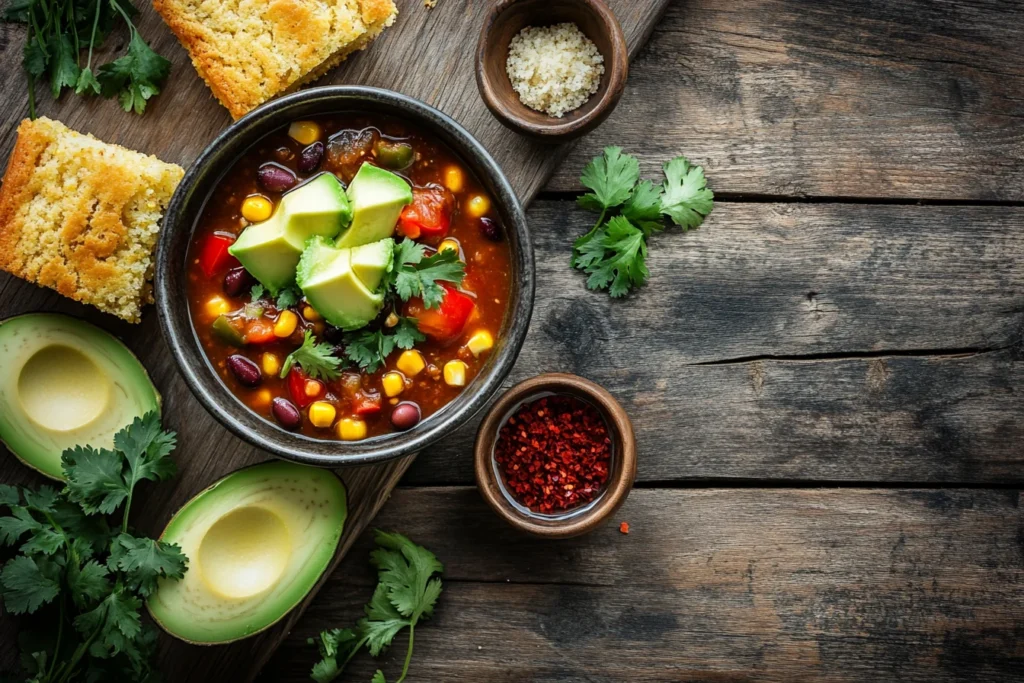
All of these dinner ideas are healthy, veggie-packed, and flavorful. They draw inspiration from different cuisines – stir-fries from Asia, curries from India/Thailand, rustic stews from Europe, and so on – showcasing that vegetables can be the star in any culinary tradition. By using herbs, spices, and interesting ingredients (like tofu or whole grains), these recipes ensure you’re getting lots of nutrients without feeling like you’re “just eating vegetables.” Up next, let’s take a trip around the world for even more veggie inspiration!
Global Flavors: Vegetable Recipes from Around the World
One of the most exciting things about cooking with vegetables is the sheer variety of flavors you can explore. Just about every culture has beloved vegetable dishes, from spicy street food to homestyle comfort meals. Taking inspiration from global cuisines is a great way to keep your vegetable recipe repertoire interesting and delicious. Best of all, many of these international veggie recipes use ingredients that are readily available in American and Canadian grocery stores (or simple substitutions). Here are a few vegetable dishes from around the world to inspire you:
Aloo gobi is a popular North Indian curry featuring potatoes (aloo) and cauliflower (gobi) cooked with spices like turmeric, cumin, and ginger. It’s a shining example of how flavorful and satisfying vegetable-focused dishes are in Indian cuisine.
French Ratatouille: As mentioned earlier, ratatouille is a French Provençal stewed vegetable dish originating from Nice. It’s made by simmering together eggplant, zucchini, bell peppers, tomatoes, onions, and herbs until they create a rich, chunky stew. Ratatouille can be enjoyed on its own, with bread, or as a filling for crepes or omelettes. It’s a wonderful way to enjoy summer vegetables and is naturally vegan and gluten-free. This dish shows that French cuisine isn’t all butter and cream – it can be very veggie-centric too!
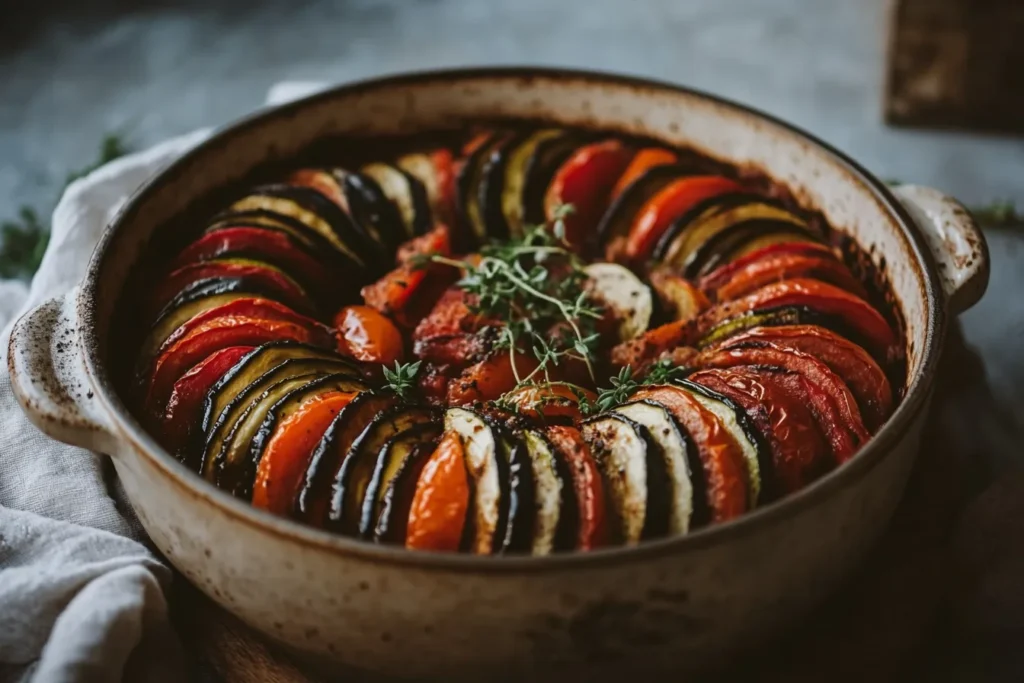
Indian Aloo Gobi: Aloo gobi (as pictured above) is a vegetarian dish from the Indian subcontinent made with potatoes and cauliflower spiced with turmeric, cumin, coriander, and other spices. It’s a dry curry (meaning it’s not very saucy) that’s typically yellowish from the turmeric. You’ll often find aloo gobi on Indian restaurant menus in North America because it’s such a crowd-pleaser. The potatoes make it hearty, the cauliflower soaks up the spices, and it’s usually garnished with fresh cilantro. Serve it with rice or naan. If you like Indian flavors, this is a must-try vegetable recipe – it’s comforting and full of warm spices.

Chinese Stir-Fry (Di San Xian): Chinese cuisine offers countless vegetable dishes, but one favorite from northern China is Di San Xian, which translates to “three treasures of the earth.” This homestyle dish stir-fries three common veggies – eggplant, potato, and bell pepper – until tender and lightly caramelized, then tosses them in a savory garlic-soy glaze. The combination is unbelievably good for something so simple. Each vegetable brings a different texture and flavor: the eggplant is silky, the potato is crispy on the outside and soft inside, and the peppers are sweet and a little smoky. Di San Xian is typically served with rice and proves that you don’t need meat to have a very satisfying dish in Chinese cuisine. (For a quicker take, you can pan-fry these veggies and use a bottled stir-fry sauce.)
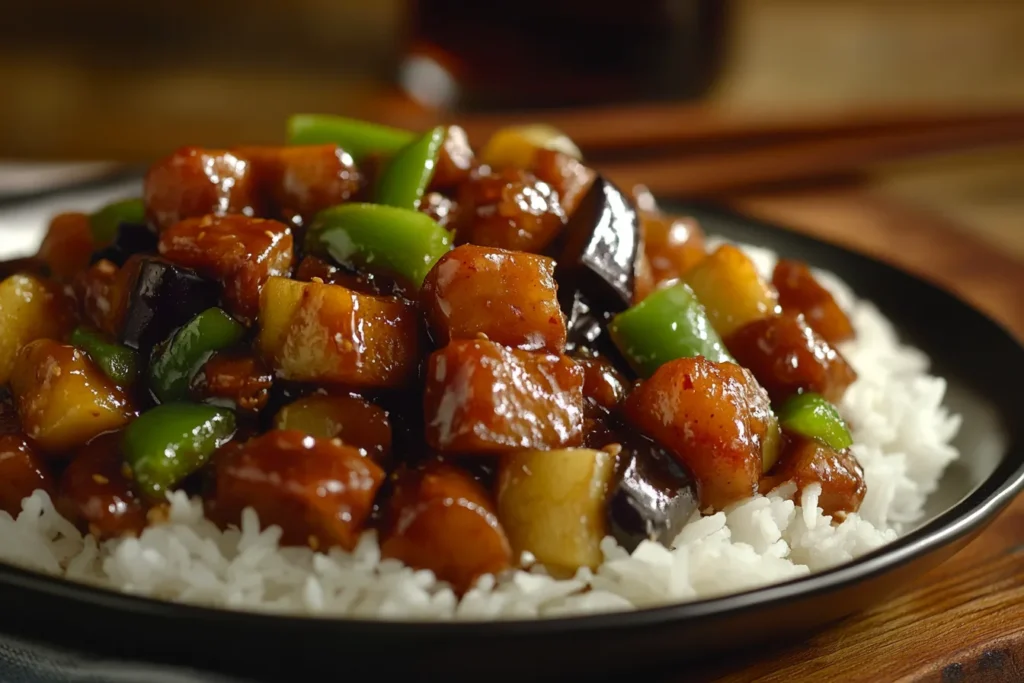
Mexican Veggie Fajitas (or Tacos): In Mexican cuisine, vegetables often play supporting roles, but you can make them the star – for example, veggie fajitas. Simply sauté strips of bell peppers and onions (and zucchini or mushrooms, if you like) with classic Tex-Mex seasonings like cumin, chili powder, and garlic. Pile the sizzling veggies into warm tortillas and top with salsa, avocado, or a bit of cheese. These vegetable fajitas are colorful, fun, and hearty. Similarly, grilled street corn (elote) is a Mexican favorite: ears of corn are grilled and then brushed with a mixture of mayo, lime, chili powder, and cotija cheese – a fantastic way to enjoy corn on the cob in summer. Even a simple dish of beans and rice in Latin American cuisine, when loaded with sautéed peppers, tomatoes, and spices, becomes a flavorful vegetarian main course.
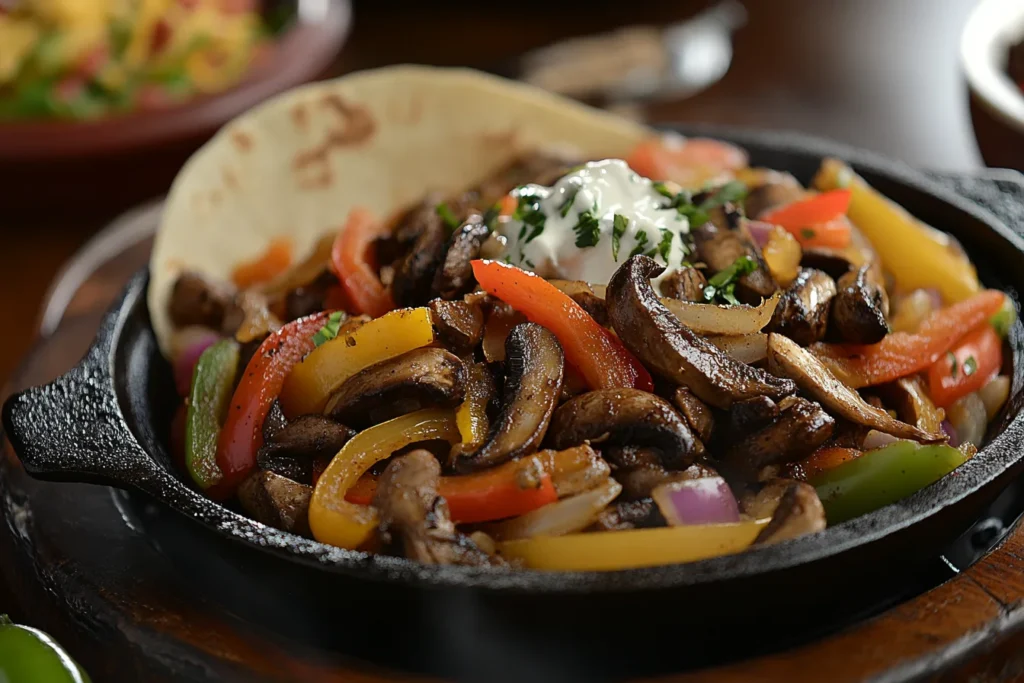
Mediterranean Grilled Vegetables & Mezze: The Mediterranean region (Italy, Greece, Middle East, etc.) is known for its plant-rich dishes. Think of Greek grilled vegetable skewers (with chunks of zucchini, bell peppers, onion, and mushrooms marinated in olive oil and herbs), or a Middle Eastern platter of mezze featuring spreads and salads like hummus (made from chickpeas), baba ghanoush (a smoky roasted eggplant dip), tabbouleh (a parsley, bulgur, and tomato salad), and stuffed grape leaves. An Italian example is Capónata, a Sicilian eggplant dish somewhat similar to ratatouille, with eggplant, tomatoes, olives, and capers cooked into a tangy-sweet relish. Or try a simple Italian bruschetta topped with chopped tomatoes and basil – technically a veggie dish! These international recipes show how vegetables form the backbone of many iconic dishes worldwide.
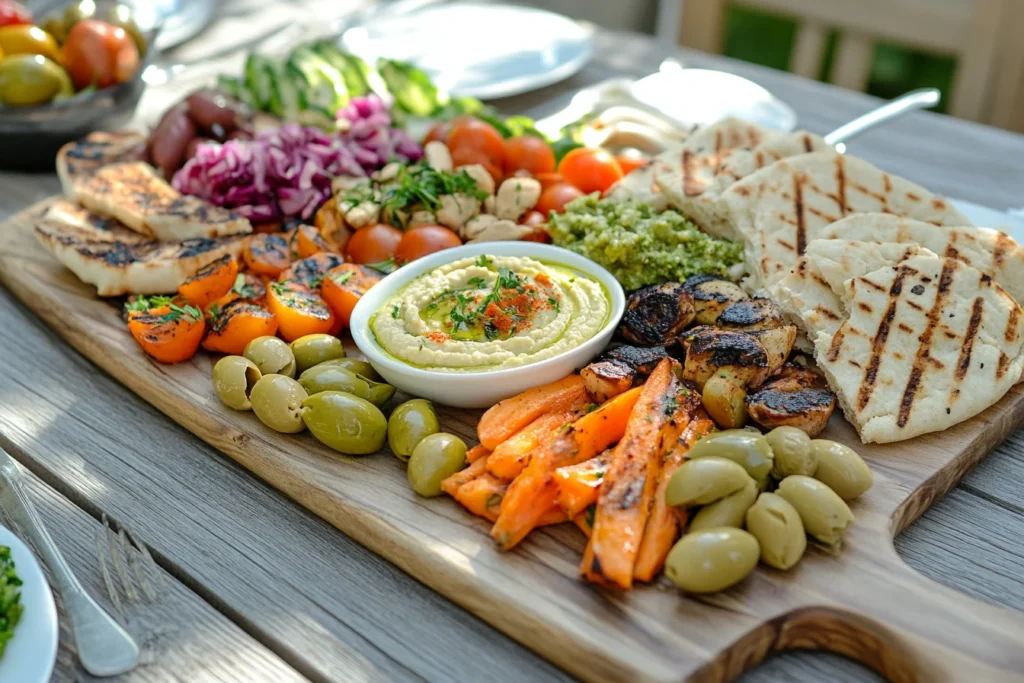
Exploring global vegetable recipes is a terrific way to break out of a rut if you find yourself cooking the same veggies in the same way all the time. You might discover new flavors you love, like the warm spice mix in Indian curries or the zing of fresh herbs and lemon in Mediterranean dishes. Plus, it keeps your diet varied – each cuisine tends to use a different mix of vegetables, so eating globally ensures you’re getting a broad range of nutrients. Don’t be afraid to mix and match ideas either: for instance, you could put an Indian-inspired spiced cauliflower into a taco for a fun fusion twist! The possibilities are endless.
Tips for Cooking with Vegetables (and Making Them Tasty)
Cooking with vegetables can be easy and rewarding, especially with a few simple tips in mind. Here are some general tips and tricks to help you get the most out of your veggie recipes:
- Season Generously: One common mistake is under-seasoning vegetables. Just like meat, veggies benefit from salt and spices to enhance their flavor. Don’t be shy with herbs (basil, oregano, thyme, etc.), spices (pepper, cumin, paprika, curry powder), and aromatics like garlic and onion. Even a squeeze of lemon juice or a dash of vinegar at the end of cooking can brighten up veggie dishes immensely.
- Don’t Overcook: There’s a fine line between nicely cooked vegetables and mushy ones. Most veggies taste best when they’re cooked until just tender but still have some life in them. For example, when blanching green beans or broccoli, cook until they’re bright green and slightly crisp – this keeps the nutrients and flavor. If you’re stir-frying, high heat for a short time works best to keep veggies crisp-tender. Overcooked broccoli or zucchini that turns to mush is what gives vegetables a bad rap. So keep an eye on the time and test for doneness with a fork.
- Mix Textures and Colors: A great vegetable dish often has a mix of textures – something soft, something with a bite, maybe something creamy or crunchy on top. Think of a salad: you might combine crisp lettuce, juicy tomatoes, crunchy cucumbers, and creamy avocado. You can apply the same idea to cooked dishes. If you’re making a vegetable pasta, you could toss in some sautéed zucchini (soft) with roasted cherry tomatoes (juicy) and toasted pine nuts (crunchy) for contrast. Also, use a variety of colors. Eating the rainbow isn’t just nutritionally wise, it makes the dish visually appealing and more appetizing.
- Use Fresh When Possible (but Frozen is Okay too!): Fresh, seasonal vegetables from your local market will often have the best flavor and texture. In summer, fresh tomatoes, corn, and zucchini are at their peak in the US and Canada, so that’s the time to make things like fresh tomato salsa or grilled zucchini. In cooler months, hearty veggies like squash, carrots, and parsnips shine in roasting or soups. That said, frozen vegetables are a fantastic convenience – they’re usually frozen at peak ripeness, so they retain nutrients and are already chopped and ready to cook. Frozen peas, spinach, broccoli, and green beans can save time and work well in many recipes (just be careful not to overcook frozen veggies since they can go soft). Having a stash of frozen veggies means you can always toss together a healthy meal even if the crisper drawer is empty.
- Make Veggies Fun for Kids (and Adults!): If you or your family are still warming up to veggies, try different preparations to find what you like best. For kids or picky eaters, roasting veggies with a sprinkle of parmesan or a drizzle of honey can win them over (roasted carrots with a touch of honey get candy-sweet). You can also incorporate vegetables into dishes in sneaky ways, like adding puréed butternut squash into mac and cheese sauce or blending carrots and spinach into a fruit smoothie (the fruit masks the taste). Another tip is to involve kids in the kitchen – let them build their own veggie pizzas or assemble taco toppings. They’re more likely to eat what they helped make. And remember, presentation can make a difference: a platter of colorful veggie sticks with a yummy dip (ranch, hummus, etc.) can be more enticing than plain steamed vegetables.
- Pair with Complementary Flavors: Certain ingredients naturally go great with vegetables. For example, a little cheese can make a vegetable dish feel indulgent – think broccoli with cheddar, or tomatoes with fresh mozzarella (like a Caprese salad). A splash of soy sauce or sesame oil can instantly give veggies an Asian flair. Garlic and olive oil with a pinch of chili flakes can elevate sautéed greens like kale or spinach. Experiment with simple sauces and toppings: a dollop of pesto on roasted veggies, a sprinkle of dukkah (spice-nut mix) on salads, or even a fried egg on a bed of sautéed vegetables can turn it into a more complete, flavorful dish.
By following these tips, cooking vegetables will become easier and more enjoyable. You’ll find that veggies are incredibly adaptable – once you get the hang of roasting, stir-frying, and seasoning to your taste, you can improvise and create your own easy vegetable recipes on the fly. The most important tip? Don’t be afraid to experiment. Vegetables are pretty forgiving to cook with, and you might stumble on your new favorite dish by trying a new spice or combo.
Get Creative and Enjoy Your Veggies
Cooking with vegetables unlocks a world of culinary possibilities. From quick and easy vegetable recipes that save time on weeknights to healthy veggie dinners that comfort and nourish, there’s truly something for everyone. We’ve traveled from America’s kitchens to the bustling markets of Asia and the Mediterranean countryside, seeing how each culture celebrates veggies in its own way. The takeaway? Vegetables are anything but boring – they can be zesty, hearty, creamy, crunchy, and downright crave-worthy, depending on how you cook them.
Whether you’re in the USA, Canada, or anywhere else, you have access to an amazing variety of vegetables year-round. Take advantage of that! Visit your local farmer’s market or produce aisle and pick out something new, or use that bounty of summer tomatoes/zucchini when it’s their season. Try a new recipe from another cuisine – maybe a spicy Indian curry or a classic French ratatouille – to broaden your palate. And don’t hesitate to make these recipes your own: cooking is an art, and recipes are just starting points. Add your favorite herbs, swap in the veggies you have on hand, and adjust seasonings to your liking.
Incorporating more vegetables into your meals is one of the best things you can do for your health, according to countless studies and nutrition experts. But beyond that, it can also be a joy for your taste buds. As you’ve seen, “vegetable-focused” definitely doesn’t mean bland or unsatisfying. On the contrary – it often means a plate full of color, flavor, and life.
So next time you’re wondering what to cook, consider making vegetables the star of your plate. With these ideas for easy recipes, global dishes, and handy cooking tips, you’re well equipped to create meals that are both healthy and delicious. Happy cooking, and enjoy the veggie adventure!

